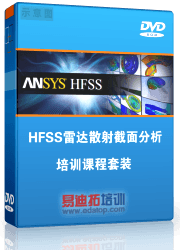- 易迪拓培训,专注于微波、射频、天线设计工程师的培养
应用DWT-FMM计算二维电大导体目标RCS
录入:edatop.com 点击:
应用DWT-FMM计算二维电大导体目标RCS
内容简介:文章基于快速多极子的远场近似思想,提出了应用小波变换区分远场作用组中的强作用单元和弱作用单元,并在计算中忽略弱作用单元的方法。该方法让聚集和解聚矩阵更为稀疏,从而加快了它们与向量的相乘过程,应用该方法和快速多极子分别对二维电大导体目标的雷达散射截面进行计算,并将得到的结果进行比较。实验结果表明该方法在不影响精度的同时,有效降低了计算复杂度,且在内存消耗上有了很大的改善。
Abstract:Based on the far-field approximation thought of fast multipole method (FM M ) ,a method to differentiate important units and unimportant units in far-field group by discrete wavelet transform (DWT ) is proposed ,and these unimportant units are neglected in the computation . This method makes aggregation matrix and disaggregation matrix sparser ,and accelerates the speed of multiplica-tion of them and vector .T he proposed method and the traditional FM M are applied to calculating the radar cross section(RCS) of two-dimensional electrically large perfectly electrical conductor (PEC) ob-ject respectively ,and then the results obtained are compared .It is show n that the proposed method efficiently reduces the complexity of the computation without sacrificing much accuracy ,and saves much computer memory .
作者:齐琦, 陈明生, 吴先良, 刘艺,
关键词:雷达散射截面, RCS, 快速多极子, 离散小波变换, 稀疏矩阵, 导体目标


